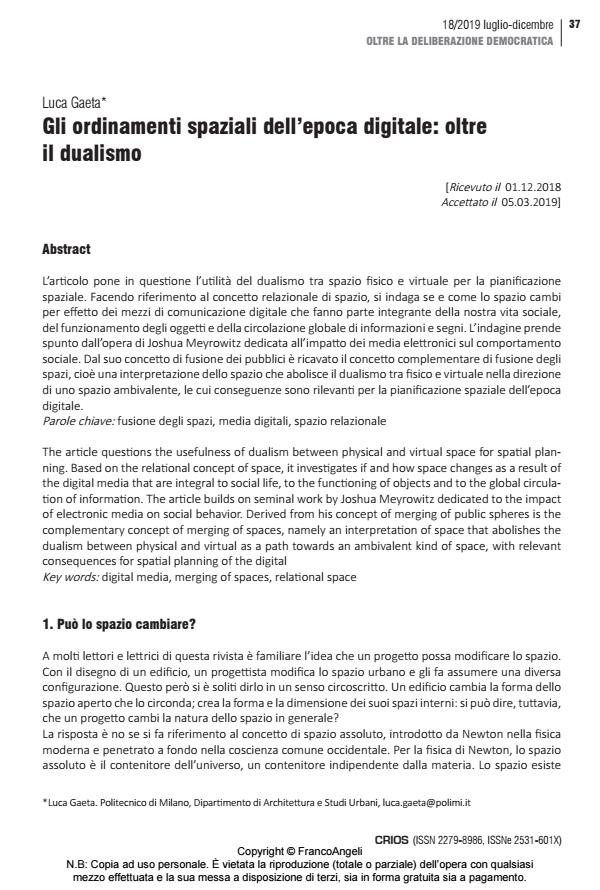Gli ordinamenti spaziali dell’epoca digitale: oltre il dualismo
Journal title CRIOS
Author/s Luca Gaeta
Publishing Year 2020 Issue 2019/18
Language Italian Pages 9 P. 37-45 File size 155 KB
DOI 10.3280/CRIOS2019-018004
DOI is like a bar code for intellectual property: to have more infomation
click here
Below, you can see the article first page
If you want to buy this article in PDF format, you can do it, following the instructions to buy download credits

FrancoAngeli is member of Publishers International Linking Association, Inc (PILA), a not-for-profit association which run the CrossRef service enabling links to and from online scholarly content.
The article questions the usefulness of dualism between physical and virtual space for spatial planning. Based on the relational concept of space, it investigates if and how space changes as a result of the digital media that are integral to social life, to the functioning of objects and to the global circulation of information. The article builds on seminal work by Joshua Meyrowitz dedicated to the impact of electronic media on social behavior. Derived from his concept of merging of public spheres is the complementary concept of merging of spaces, namely an interpretation of space that abolishes the dualism between physical and virtual as a path towards an ambivalent kind of space, with relevant consequences for spatial planning of the digital
Keywords: Digital media, merging of spaces, relational space
Luca Gaeta, Gli ordinamenti spaziali dell’epoca digitale: oltre il dualismo in "CRIOS" 18/2019, pp 37-45, DOI: 10.3280/CRIOS2019-018004